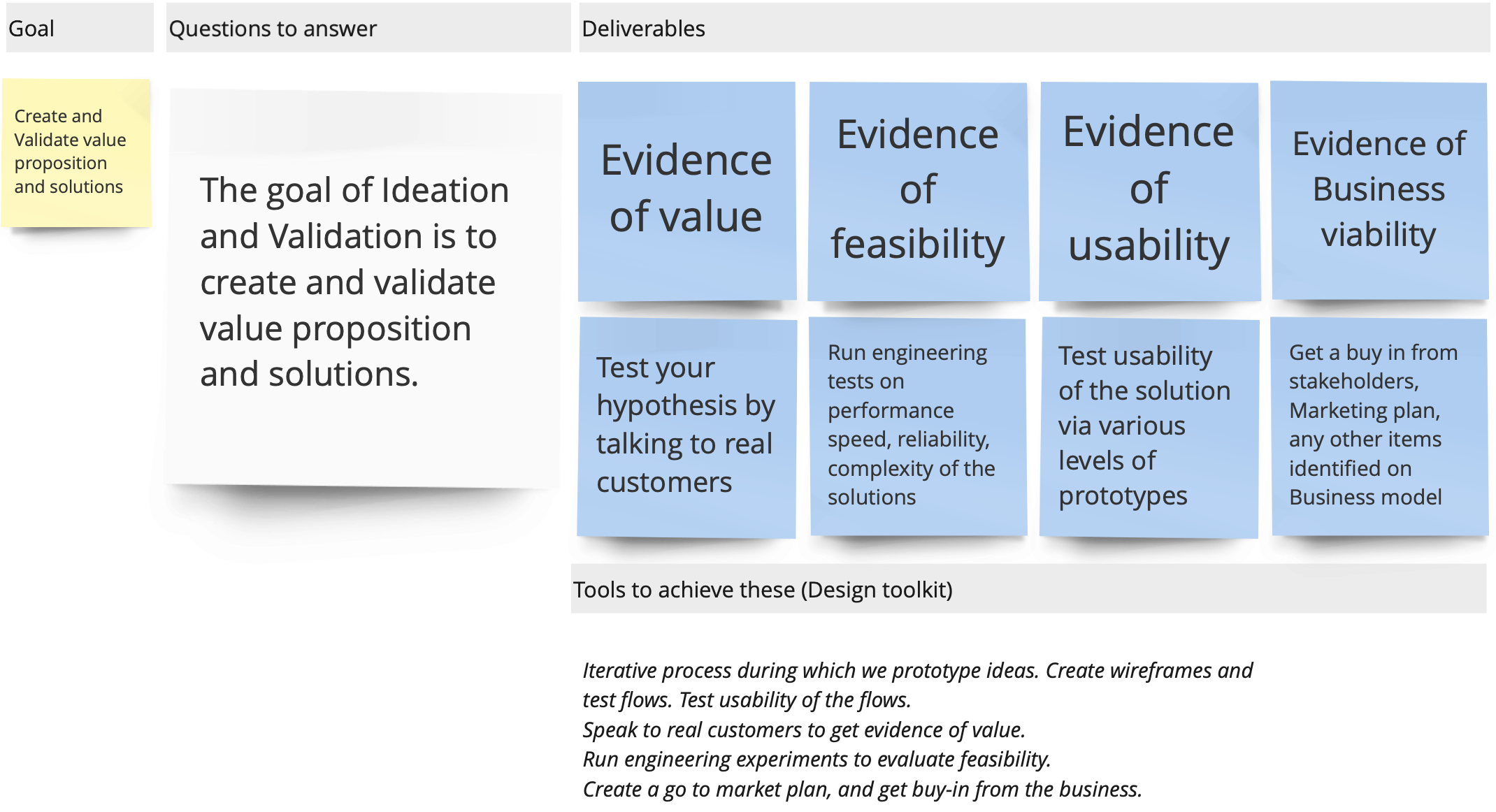Product Discovery Process
Product Discovery is very much about the intense collaboration of product management, user experience design, and engineering. In discovery, we are tackling the various risks before we write even one line of production software. The purpose of product discovery is to quickly separate the good ideas from the bad. The output of product discovery is a validated product backlog.
Specifically, this means getting answers to four critical questions:
- Will the user buy this (or choose to use it)?
- Can the user figure out how to use this?
- Can our engineers build this?
- Can our stakeholders support this?
Part I – Framing
PR Release
Writing an imagined press release of what it would be like once this product launches. How does it improve the life of our customers? What are the real benefits to them? You’ve all read a press release before—the only difference is that this is entirely imagined. It is describing a future state we want to create.
Time Required
1 – 2 hours
Customer Letter
The letter—sent to the CEO from a very happy and impressed customer—explains why he or she is so happy and grateful for the new product or redesign. The customer describes how it has changed or improved his or her life. The letter also includes an imagined congratulatory response from the CEO to the product team.
Time Required
1 – 2 hours
Resources
Design Thinking Toolkit, Activity 1 – The Love/Breakup Letter
Love letter template:
Break UP letter template:
Stakeholders map and key dates
Identify key stakeholders who have to be involved and plan key activities and deliverables with the team. Make sure business stakeholders are involved and onboard.
Time Required
1 – 2 hours
Part II – Understanding
Target market
Identify the users to focus on. Pick the top few that are most important for the business.
User Journey map
Create a user journey map for your target market. Do not focus on nuances, but make sure you capture all key touch points of user interaction with the product/service.
User Journey template:
Value proposition canvas
Identify pains and gains for each customer and create a value proposition for each group with pain relievers. Prioritise solutions and focus on top ones.
Value proposition canvas template:
Lean canvas
Create Lean canvas that identifies resources required, business and operations changes, business units that have to be involved to make proposed solution happen. What impact does it have on business to ensure market viability. Use Business model or Lean canvass depending on the project needs.
Lean canvas template:
Part III – Ideation / Validation
Evidence of value
Test your hypothesis by talking to real customers.
Time Required
Depends on complexity
Evidence of feasibility
Run engineering tests on performance speed, reliability, complexity of the solutions.
Time Required
Depends on complexity
Evidence of usability
Test usability of the solution via various levels of prototypes.
Time Required
Depends on complexity
Evidence of Business viability
Get a buy in from stakeholders, Marketing plan, any other items identified on Business model.
Time Required
Depends on complexity
Final part. Decision making
Two possible outcomes.
Outcome A — Implement
Evidence supported solution ready for implementation.
Outcome B — Do not implement
Evidence supported “no go” due to absence of Market/Value fit.
2018-…
I joined Octopus as Head of Design, managing and leading Product Design team within Octopus Labs. As a young team we went on a journey putting in places Processes, Tools, Design Systems and establishing the Product Design discipline within the business.
The point of process is to help. If any stage of it becomes tedious – it’s time to change it.
My gratitude and credit goes to my amazing team at Octopus.



